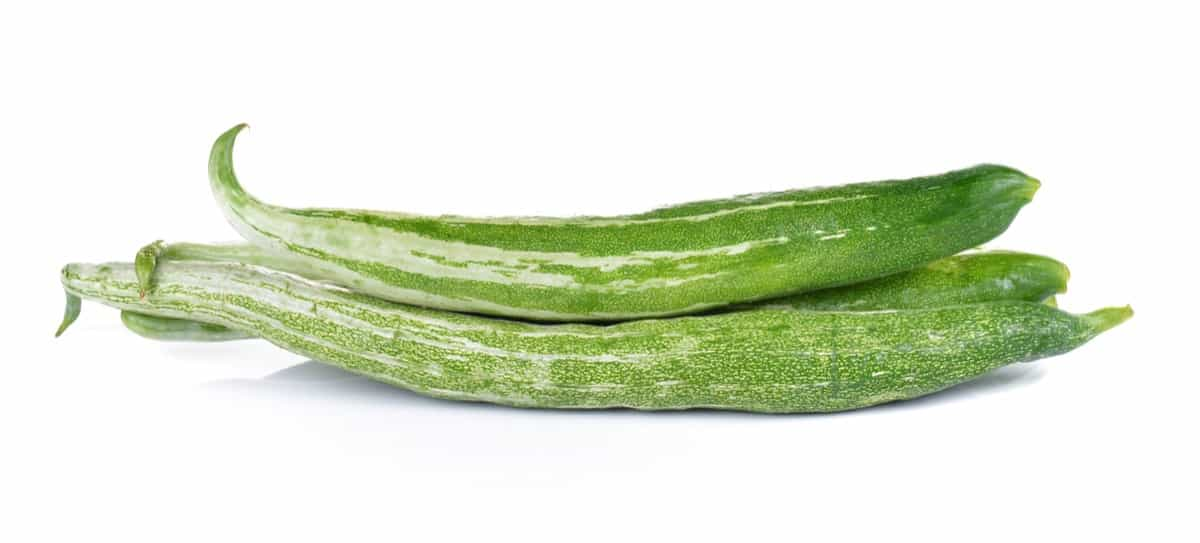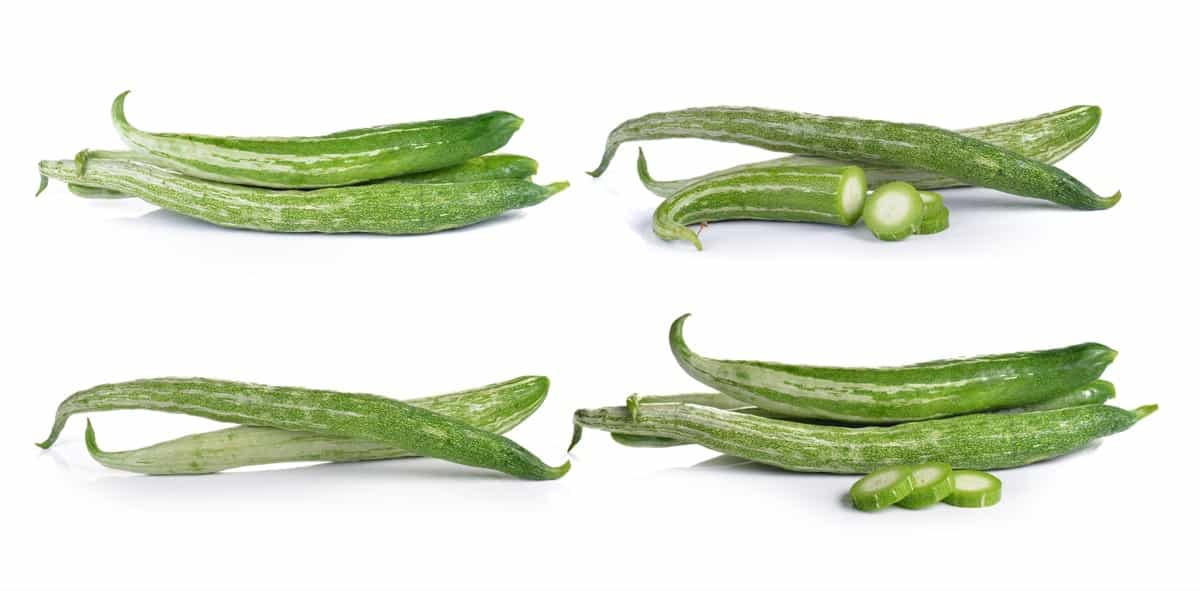Snake Gourd plants are a delightful addition to any garden. With their long, slender fruits and vibrant green foliage, they bring a touch of exotic beauty to your outdoor space. However, like any plant, snake gourds can encounter problems that hinder their growth and productivity. However, armed with the right knowledge and proactive measures, you can effectively treat and prevent many of these issues.

Regularly inspecting your plants for signs of trouble, providing adequate care and nutrition, practicing proper pest management techniques, and adjusting growing conditions as needed can help your Snake Gourd plants thrive.
8 Common Problems with Snake Gourd Plants
Preventing Snake Gourd Vine Borers: Effective Control Strategies
Implementing cultural control practices is one of the best ways to prevent Snake Gourd vine borers. Start by regularly inspecting your plants for any signs of eggs or larvae. If you spot any, remove them immediately and dispose of them from your garden area. Another important strategy is to use physical barriers such as row covers or netting to protect your plants from adult female borers. Covering your plants creates a barrier that prevents the moths from laying their eggs directly on the vines.
Crop rotation is another beneficial technique in preventing vine borer infestations. Avoid planting snake gourds in the same location year after year, as this allows pests to build up populations in the soil. Furthermore, practicing good sanitation habits is crucial in controlling vine borers. Remove and destroy any infested plant material at the end of each growing season to minimize overwintering sites for these pests.
Dealing With Leaf Curling in Snake Gourd Plants
One common problem that Snake Gourd plant owners may encounter is leaf curling. This can be quite concerning, as it indicates something wrong with the plant’s health. However, this issue has several potential causes, and understanding them can help you take appropriate measures to address the problem.
One possible reason for leaf curling is a lack of water. Snake gourds require consistent moisture levels to thrive, so ensure you provide adequate watering. On the other hand, overwatering can also lead to leaf curling and other issues, such as root rot. Therefore, finding the right balance is crucial. Another factor that may contribute to leaf curling is nutrient deficiency. Insufficient essential nutrients like nitrogen or magnesium can cause leaves to curl upwards or downwards. Consider using organic fertilizers or compost to give your plants the necessary nutrients.
Controlling Pests on Snake Gourd Plants Naturally
One of the biggest challenges that Snake Gourd plant growers face is dealing with pests. These pesky insects can wreak havoc on your plants if left unchecked. Luckily, natural ways exist to control them without resorting to harmful chemicals. A great way to prevent pest infestations is by practicing good garden hygiene. Start by regularly removing dead or decaying plant matter around your Snake Gourd plants. This will help eliminate potential breeding grounds for pests.
Another effective method is using companion planting techniques. Certain plants like Marigolds and basil have natural insect-repelling properties, so interplanting them with your Snake Gourd can help keep pests at bay. Additionally, you can make homemade organic sprays to deter pests. For example, a mixture of neem oil and water sprayed onto the leaves of your Snake Gourd plants can act as a powerful repellent against common garden pests such as aphids and mites.
Identifying and Treating Snake Gourd Fungal Diseases
Powdery Mildew
- Symptoms: This disease appears as a white powdery coating on the plant’s leaves stems, and fruits.
- Treatment: It’s important to ensure good air circulation around the plants by spacing them apart to treat downy mildew. Applying copper-based fungicides may also help in managing this disease.
Downy Mildew
- Treatment: This disease causes yellow spots on the upper sides of leaves while grayish-white patches appear on their undersides.
- Symptoms: It’s important to ensure good air circulation around the plants by spacing them apart to treat downy mildew. Applying copper-based fungicides may also help in managing this disease
Root Rot
- Treatment: If not addressed promptly, it leads to wilting leaves, stunted growth, and plant death.
- Symptoms: To prevent root rot, ensure your planting area has well-draining soil and avoid overwatering your plants.
In case you missed it: How to Increase Female Flowers in Snake Gourd: Explained in 10 Simple Steps

Managing Nutrient Deficiencies in Snake Gourd Plants
Nutrient deficiencies can be a common issue faced by Snake Gourd plant growers. These deficiencies can hinder the growth and development of the plants, leading to weak stems, yellowing leaves, and reduced fruit production. However, with proper management techniques, you can address these problems effectively. One common nutrient deficiency in Snake Gourd plants is nitrogen deficiency.
This often manifests as pale or yellowish leaves and stunted growth. To combat this issue, consider applying organic fertilizers rich in nitrogen or compost tea to boost plant nutrients. Another nutrient deficiency that Snake Gourd plants may encounter is phosphorus deficiency. Signs of this include purplish discoloration on leaves and poor root development. Adding bone meal to the soil can help alleviate this problem and promote healthy phosphorus levels.
Potassium deficiency is also a concern for Snake Gourd plants, resulting in weak stems and reduced fruit quality. Incorporating potassium-rich fertilizers such as wood ash or seaweed extract into your gardening routine can help maintain optimal plant potassium levels. Remember that prevention is always better than cure regarding nutrient deficiencies in Snake Gourd plants. Regularly test your soil’s pH levels and nutrient content before planting to ensure an optimal crop growing environment.
Preventing Snake Gourd Plant Wilting and Drooping Leaves
One common problem that Snake Gourd plants may face is wilting and drooping leaves. This can signify issues, including overwatering, underwatering, or even nutrient deficiencies. To prevent this problem, ensuring that your Snake Gourd plants receive the right amount of water is important.
On the other hand, underwatering can also result in drooping foliage. So, find a balance by checking the soil moisture regularly and adjusting your watering schedule accordingly. Additionally, providing adequate drainage for your Snake Gourd plants is essential. Mulch also aids in maintaining consistent soil temperature and reducing weed growth which could compete with nutrients.
Managing Excessive Vine Growth in Snake Gourd Plants
One common problem Snake Gourd plant growers often face is excessive vine growth. While it’s true that a healthy and vigorous vine is essential for a bountiful harvest, too much vine growth can lead to overcrowding and hinder the overall health of the plant. To manage excessive vine growth, regular pruning is key. Trim back any overly long or tangled vines for better air circulation and sunlight penetration. This will help prevent diseases and redirect energy toward fruit production.
Another effective technique is training the vines to grow vertically using trellises or stakes. By providing support, you can control the direction of growth and maximize space utilization. Also, proper nutrient management is important in controlling excessive vine growth. Avoid over-fertilizing with nitrogen-rich fertilizers, as this can promote lush foliage at the expense of fruit development. Instead, choose balanced fertilizers that provide adequate nutrients without encouraging rampant vegetative growth.
Dealing With Snake Gourd Fruit Not Setting or Dropping Prematurely
Bees are the primary pollinators for Snake Gourd plants, so planting flowers that attract them nearby can help increase fruit production. Using a small brush, you can manually transfer pollen from male to female flowers. Watering is another crucial aspect in preventing fruit drop. Inconsistent watering practices can stress the plants and cause the fruits to fall off prematurely.
In case you missed it: How to Grow Snake Gourd from Seeds in Pots: A Step-By-Step Home Garden Guide for Beginners

Ensure to water regularly and deeply while avoiding overwatering, which can lead to root rot. Nutrient deficiencies may also contribute to poor fruit development. Test your soil pH levels and provide adequate fertilization based on the results. Nitrogen deficiency can hinder flowering and fruiting processes, so using organic nitrogen-rich fertilizers like compost or well-rotted manure will benefit your plants.
Conclusion
While Snake Gourd plants can face various problems and challenges, it is important to remember that effective treatment and management strategies are available. Remember to implement control strategies such as using row covers to prevent vine borers, practicing good garden hygiene to minimize fungal diseases, and employing natural pest control methods whenever possible. By following these tips and staying vigilant throughout the growing season, you’ll be able to address common problems with Snake Gourd plants effectively.
- Feed Your Flock for Less: Top 10 Tips to Save on Chicken Feed
- Ultimate Guide to Ossabaw Island Hog: Breeding, Raising, Diet, and Care
- Hatching Answers: The Top 10 Reasons Your Chickens Aren’t Laying Eggs
- Eggs and Economics: Breaking Down the Cost of Raising Backyard Chickens
- Defend Your Greens: Proven Methods to Keep Iguanas Out of Your Garden
- Ultimate Guide to Cinnamon Queen Chicken: A Comprehensive Guide for Beginners
- Ultimate Guide to California Tan Chicken: Breeding, Raising, Diet, Egg-Production and Care
- Ultimate Guide to Marsh Daisy Chicken: Breeding, Raising, Diet, and Care
- 10 Types of Chicken Farming Businesses You Can Start for Profits